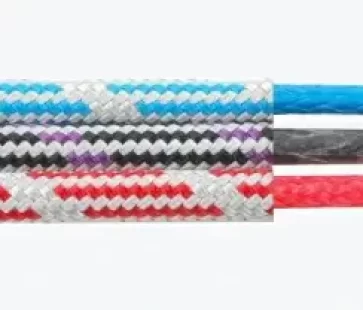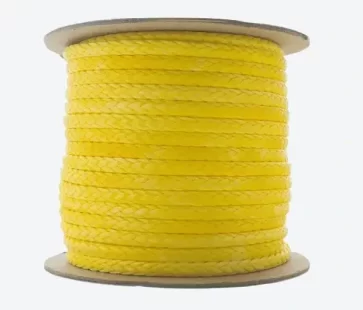
thispower
Get Out Of The Way And Enjoy Yachting

thispower
Yachting, Entertainment Essentials

thispower
Usage Scenarios

Sailboat handling

Ship maintenance and repair

Rescue Operation

thispower
THISPOWER
Unmatched Reliability
Premium Materials
Built for Adventure
Safety First
Customer Satisfaction
Eco-Friendly Practices

thispower
Master the skills of yacht recreational ropes and start an adventure at sea!
Pre-Use Inspection
Choose the Right Rope
Secure Attachment Points
Customer Support

Types of Yacht Ropes
Yacht Ropes: The Ultimate Guide for Marine Enthusiasts
Yacht ropes, more than just a tool, are the lifelines of any sailing expedition. These crucial components play a pivotal role in maneuvering and securing sailboats, making them indispensable for both novice sailors and seasoned mariners. This guide delves into the world of yacht ropes, shedding light on their significance, types, and maintenance to ensure a safe and enjoyable sailing experience.
Marine & Yacht Ropes
Marine ropes cater to a wide array of applications in the yachting realm, from anchoring to rigging. Their design prioritizes strength, durability, and resistance to harsh marine conditions.
Regatta Yacht Ropes
Specifically engineered for competitive sailing, regatta ropes are lightweight and offer minimal stretch, providing sailors with the precision and control needed for racing.
Choosing the Right Sailboat Lines
Selecting the appropriate lines for your sailboat involves considering factors like the sailboat’s size, the type of sailing you’ll be doing, and the prevailing weather conditions. The material of the rope, whether synthetic or natural, plays a crucial role in its longevity and performance.
The Role of Sailboat Life Lines
Life lines are more than just ropes; they are vital safety features that prevent overboard incidents. Understanding their installation and upkeep is paramount for ensuring the safety of all aboard.
Sailboat Safety Lines: A Necessity
Safety lines, often underestimated, are essential for preventing falls and ensuring the crew’s safety, especially in rough conditions.
Safety Lines Sailboat: Installation Tips
Installing safety lines on a sailboat is a critical task that enhances onboard safety, providing a secure attachment point for crew members to clip their safety harnesses to, especially in rough weather or when moving around the deck. Here are detailed tips for installing safety lines on your sailboat:
1
Assess Placement and Routing
Deck Layout: Consider the deck layout and the most common pathways used by the crew. The safety lines should cover these areas without obstructing movement or access to essential equipment.
Attachment Points: Identify strong, fixed points for attaching the lines, such as stanchions, cleats, or dedicated pad eyes. These points must be capable of withstanding the force of a person’s weight and the dynamic loads of the sea.
2
Choose the Right Equipment
Line Material: Opt for marine-grade, UV-resistant, and abrasion-resistant materials like high-modulus polyethylene (e.g., Dyneema) for durability and strength.
Hardware: Use stainless steel or marine-grade aluminum hardware for corrosion resistance. This includes shackles, pad eyes, and line tensioners.
3
Installation Process
Measurements: Carefully measure the distances between attachment points. Allow for a slight droop in the lines for ease of clipping on and off but not so much that it poses a tripping hazard.
Cutting and Sealing: Cut the lines to the required lengths, and seal the ends to prevent fraying. A hot knife works well for synthetic materials, creating a clean, sealed end.
Threading: Thread the lines through the intended pathway, ensuring there are no sharp bends that could cause wear over time.
Securing Ends: Attach the ends of the lines to the designated strong points using the chosen hardware. Ensure all fittings are tightened securely and double-check for any potential slippage.
4
Tensioning
- The lines should be taut but not overly tight. Excessive tension can put undue stress on attachment points and the line itself, while insufficient tension can lead to sagging that might trip crew members.
5
Testing and Inspection
Load Testing: Gently test the lines by applying weight to ensure they are securely installed and can handle the expected loads.
Visual Inspection: Check the entire length for any potential chafe points or areas where movement might cause wear.
6
Maintenance
Regularly inspect the safety lines for signs of wear, corrosion on the hardware, and UV degradation. Replace any components that show signs of wear or damage immediately.
7
Tensioning
- The lines should be taut but not overly tight. Excessive tension can put undue stress on attachment points and the line itself, while insufficient tension can lead to sagging that might trip crew members.
8
Testing and Inspection
Load Testing: Gently test the lines by applying weight to ensure they are securely installed and can handle the expected loads.
Visual Inspection: Check the entire length for any potential chafe points or areas where movement might cause wear.
Regatta Yacht Ropes: Performance and Selection
In the competitive world of regattas, every detail counts, including the choice of ropes. This part of the guide focuses on selecting ropes that can enhance performance and withstand the rigors of racing.
Innovations in Yacht Ropes
The yacht roping industry is continually evolving, with new materials and technologies emerging. Here, we explore the latest advancements and what the future holds for yacht roping.
Conclusion
Choosing the right yacht ropes and maintaining them properly is crucial for safety and performance in sailing. By understanding the different types of ropes, their applications, and care requirements, sailors can ensure their voyages are both enjoyable and secure.
FAQs about Yacht Ropes
The replacement frequency for yacht ropes depends on various factors, including the frequency of use, exposure to harsh environmental conditions, and the type of rope. As a general guideline, it’s advisable to inspect your ropes regularly for signs of wear and tear, such as fraying, discoloration, stiffness, or brittleness. While some ropes can last several years, it’s prudent to conduct a thorough inspection at least once a year and replace any ropes that show significant signs of deterioration.
Not all ropes are suitable for yachting. Yacht ropes must withstand various stresses, such as UV exposure, salt water, and heavy loads. Therefore, it’s essential to use ropes specifically designed for marine applications. These ropes are typically made from synthetic materials like nylon, polyester, or Dyneema, which offer strength, durability, and resistance to environmental factors. Using the incorrect type of rope can lead to premature failure and potentially dangerous situations.
To clean yacht ropes, first, rinse them thoroughly with fresh water to remove salt and any loose dirt. For more stubborn grime, soak the ropes in a mild detergent solution and gently agitate them. Avoid using harsh chemicals or abrasive brushes, as these can damage the rope fibers. After washing, rinse the ropes thoroughly with fresh water again and allow them to air-dry completely in a shaded, well-ventilated area before storing or reusing them. It’s important not to dry them in direct sunlight, as UV rays can weaken the fibers.
Regular inspections are crucial to ensure the safety of your yacht ropes. Check for visible signs of wear, such as fraying, cuts, abrasions, or significant fading. Also, pay attention to changes in texture, such as stiffening or becoming brittle, which can indicate UV damage. If a rope shows any signs of significant wear or damage, it’s best to replace it to maintain safety onboard. When in doubt, consult with a professional or refer to the manufacturer’s guidelines.
Synthetic ropes are generally preferred over natural fibers for yachting due to their superior strength, durability, and resistance to environmental factors such as moisture, UV light, and saltwater. Materials like nylon, polyester, and Dyneema are common in yacht rigging for these reasons. Natural fibers, while traditional, are more susceptible to rot, mildew, and degradation from the elements, making them less ideal for the demanding conditions of marine environments.

thispower
Let's start working together now!
Years of professional OEM experience to meet customised needs. Fill in the enquiry form to cooperate with us and enjoy high quality service.


